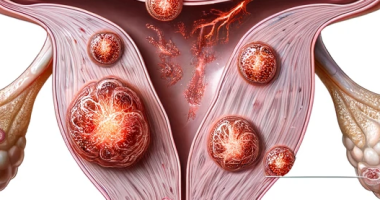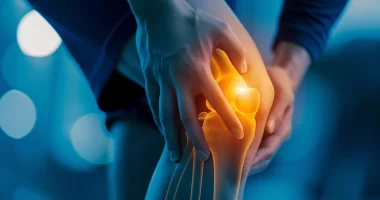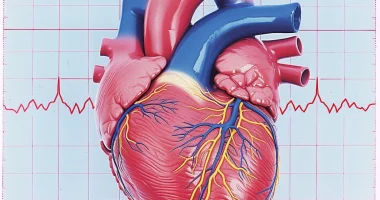Depression
Definition
Depression is a mental disorder manifested by a steady decline in mood, motor retardation, and impaired thinking. The cause of development can be traumatic situations, somatic diseases, substance abuse, metabolic disorders in the brain, or lack of bright light (seasonal depression). The disorder is accompanied by decreased self-esteem, social disadaptation, and loss of interest in the usual activities, one’s own life, and surrounding events. Diagnosis is established based on complaints, history of the disease, the results of special tests, and additional studies.
General information
Depression is an affective disorder accompanied by persistent depressed mood, negative thinking, and slowed movement. It is the most common mental disorder. According to recent studies, the lifetime probability of developing depression ranges from 22% to 33%. Mental health experts point out that these figures reflect only official statistics. Some patients suffering from this disorder either do not consult a doctor at all or make their first visit to a specialist only after the development of secondary and related disorders.
The incidence peaks in adolescence and the second half of life. The prevalence of depression at the age of 15-25 years is 15-40%, at the age of over 40 years – 10%, and at the age of over 65 years – 30%. Women are affected one and a half times more often than men. Affective disorder aggravates the course of other mental disorders and somatic diseases, increases the risk of suicide, and can provoke alcoholism, drug addiction, and substance abuse. Depression is treated by psychiatrists, psychotherapists, and clinical psychologists.
Causes of depression
In about 90% of cases, the cause of mood disorder is acute psychological trauma or chronic stress. Depression resulting from psychological trauma is called reactive depression. Reactive disorders are triggered by divorce, death or severe illness of a loved one, disability or serious illness of the patient himself, dismissal, conflicts at work, retirement, bankruptcy, a sharp drop in the level of financial support, moving, etc.
Neurotic depression develops against the background of chronic stress. As a rule, in such cases, the specific cause of the disorder cannot be established – the patient either finds it difficult to name the traumatic event or describes his life as a chain of failures and disappointments.
Women suffer from psychogenic depression more often than men, and older people more often than younger people. Other risk factors include social factors (poverty), insufficient resistance to stress, low self-esteem, a tendency to self-incrimination, a pessimistic view of the world, an unfavorable environment in the parental family, physical, psychological, or emotional abuse suffered in childhood, early loss of parents, hereditary predisposition (presence of depression, neurotic disorders, drug addiction and alcoholism in relatives), lack of support in the family and society.
Endogenous depression is a relatively rare type, accounting for approximately 1% of the total number of affective disorders. Endogenous affective disorders include periodic depression in unipolar manic-depressive psychosis, depressive phase in bipolar variants of manic-depressive psychosis, involutional melancholia, and senile depression. The main reason for developing this group of disorders is neurochemical factors: genetically determined disorders of biogenic amine metabolism, endocrine shifts, and metabolic changes resulting from aging.
Another risk factor is brain lesions and somatic diseases. According to statistics, clinically significant affective disorders are detected in 50% of stroke patients, in 60% of patients suffering from chronic cerebral circulatory insufficiency, and in 15-25% of patients with a history of brain injury. In traumatic brain injury, depression is usually detected in the remote period (several months or years after the trauma).
Classification
The following types of depressive disorders are distinguished:
- Clinical (major) depression – accompanied by persistent low mood, fatigue, loss of energy, loss of previous interests, inability to enjoy, sleep and appetite disturbances, pessimistic perception of the present and future, ideas of guilt, suicidal thoughts, intentions, or actions. Symptoms persist for two weeks or more.
- Minor depression – the clinical picture does not fully correspond to major depressive disorder, with two or more symptoms of major affective disorder persisting for two or more weeks.
- Atypical depression – typical manifestations of depression are combined with sleepiness, increased appetite, and emotional reactivity.
- Postpartum depression is an affective disorder that occurs after childbirth.
- Recurrent depression – symptoms of the disorder appear about once a month and persist for several days.
- Dysthymia is a persistent, moderately pronounced decline in mood that does not reach the intensity characteristic of clinical depression. It persists for two or more years. Some patients periodically experience major depression against the background of dysthymia.
Symptoms of depression
The main manifestation is the so-called depressive triad, which includes a steady deterioration in mood, slowed thinking, and decreased motor activity. Deterioration of mood can be manifested by sadness, frustration, hopelessness, and a sense of loss of prospects. In some cases, there is an increase in anxiety levels; such conditions are called anxious depression. Life seems meaningless; previous activities and interests become unimportant. Self-esteem decreases. Suicidal thoughts arise. Patients shut themselves off from others. Many patients tend to self-blame. In neurotic depressions, patients sometimes, on the contrary, blame others for their misfortunes.
Slow thinking in depression manifests in problems in planning actions, learning, and solving daily tasks. Perception and memorization of information are impaired. Patients note that thoughts seem to become viscous and sluggish, and any mental effort requires a large investment of effort. Slow thinking is reflected in speech—depressed patients become silent, speak slowly, reluctantly, with long pauses, and prefer short one-word answers.
Motor sluggishness includes stiffness, slowness, and stiffness of movement. Depressed patients spend most of their time practically motionless, frozen in a sitting or lying position.
Depressed patients complain of headaches and heart, joint, stomach, and intestinal pain, but additional examinations either do not reveal any somatic pathology or do not correspond to the intensity and nature of the pain. Typical signs of depression are disorders in the sexual sphere. Sexual desire is significantly reduced or lost. Menstruation stops or becomes irregular in women, and impotence often develops in men.
In general, depression is associated with decreased appetite and weight loss. In some cases (in atypical affective disorder), on the contrary, there is an increase in appetite and weight gain. Early awakenings manifest sleep disorders. During the day, patients with depression feel sleepy and not rested. Inversion of the circadian rhythm of sleep-wakefulness (sleepiness during the day and insomnia at night) is possible. Some patients complain that they do not sleep at night, while relatives claim the opposite – this discrepancy indicates sleep loss.
Diagnosis
The diagnosis is made based on the patient’s history, complaints, and specific tests to determine the level of depression. Diagnosis requires the presence of at least two symptoms of the depressive triad and at least three additional symptoms, including guilt, pessimism, difficulty concentrating and making decisions, decreased self-esteem, sleep disturbances, appetite disturbances, suicidal thoughts, and intentions. If somatic diseases are suspected, a patient suffering from depression is referred for consultation to a general practitioner, neurologist, cardiologist, gastroenterologist, rheumatologist, endocrinologist, and other specialists.
Treatment of depression
Treatment of minor, atypical, recurrent, postpartum depression and dysthymia is usually done on an outpatient basis. Hospitalization may be required for a significant disorder. The treatment plan is made individually, depending on the type and severity of depression; only psychotherapy or psychotherapy in combination with pharmacotherapy is used. The basis of drug therapy is antidepressants. In case of lethargy, antidepressants with a stimulating effect are prescribed; in case of anxious depression, sedative drugs are used.
Response to antidepressants depends on both the type and severity of depression and the individual characteristics of the patient. In the initial stages of pharmacotherapy, psychiatrists and psychotherapists sometimes have to replace the drug due to insufficient antidepressant effects or pronounced side effects. Reduction in the severity of symptoms of depression is noted only 2-3 weeks after the start of antidepressants, so at the initial stage of treatment, patients are often prescribed tranquilizers. Tranquilizers are prescribed for a period of 2-4 weeks; the minimum period of antidepressant medication is several months.
Psychotherapeutic treatment for depression may include individual, family, and group therapy. Rational therapy, hypnosis, Gestalt therapy, art therapy, etc., are used. In cases of resistant (untreatable) depression, vagus nerve stimulator implantation is used in some cases, and functional neurosurgical procedures are used.
All these treatment options are available in more than 550 hospitals worldwide (https://doctor.global/results/diseases/drug-resistant-depression). For example, Vagus nerve stimulator (VNS) implantationcan be done in 12 clinics across Israel for an approximate price of $4.7 K – 6.3 K(https://doctor.global/results/asia/israel/all-cities/all-specializations/procedures/vagus-nerve-stimulator-vns-implantation).
The type, severity, and cause of depression determine the prognosis. Reactive disorders usually respond well to treatment. In neurotic depressions, there is a tendency to prolonged or chronic course. The features of the underlying disease determine the condition of patients with somatogenic affective disorders. Endogenous depression is poorly amenable to non-medication therapy; with the correct selection of drugs, in some cases, there is a stable compensation.



